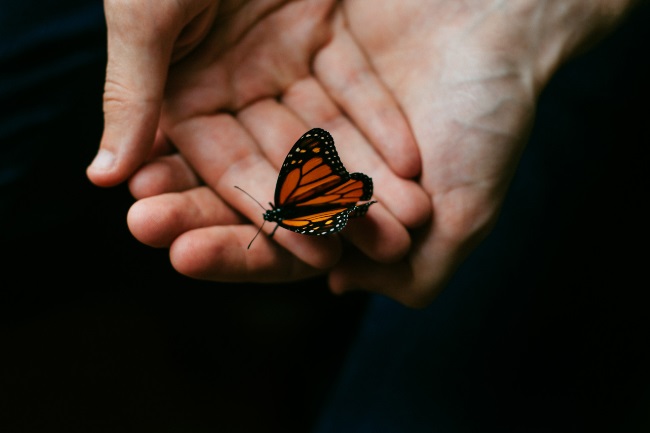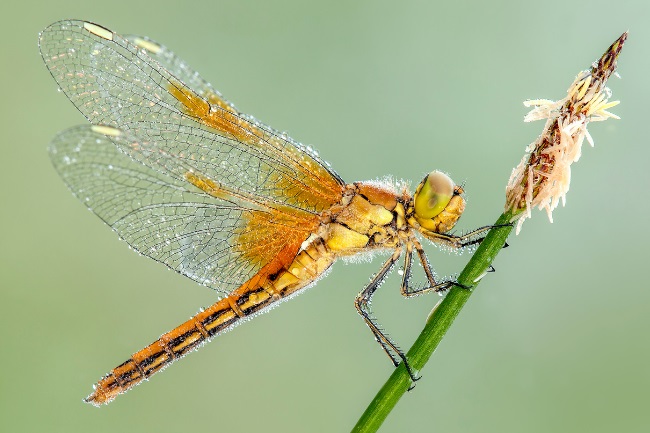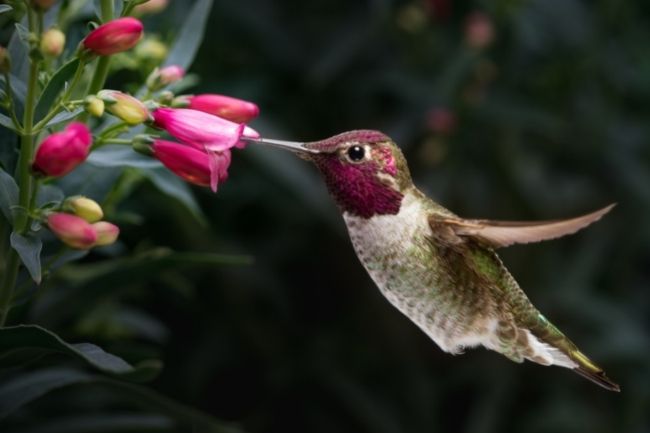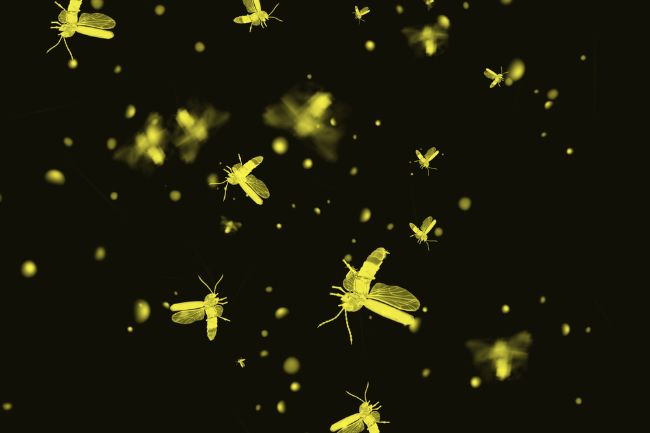This layer is mainly populated by bees, wasps, bumblebees, and other smaller animals that sometimes use blossoms as camouflage.
More About Bees
Bees are flying insects known for their role as pollinators, transferring pollen from male to female flower parts and enabling plant reproduction. They play a crucial role in ecosystems and agriculture by facilitating the pollination of many flowering plants, contributing to biodiversity and food production.
More About Butterflies
Butterflies are colorful insects with delicate wings that undergo a remarkable transformation from caterpillars to adults through the process of metamorphosis. They are important pollinators, visiting flowers to feed on nectar and transferring pollen in the process, while also captivating us with their graceful flight and vibrant beauty.
More About Dragonflies
Dragonflies are flying insects with long, slender bodies and large, often colorful wings. They are skilled hunters, adept at capturing their prey mid-air, and their presence in aquatic habitats is an indicator of healthy ecosystems as they help control populations of mosquitoes and other insects.
More About Hummingbirds
Hummingbirds are small, agile birds known for their rapid wingbeats and ability to hover in mid-air. They are renowned for their iridescent feathers and their unique capability to feed on nectar, making them important pollinators for various flowering plants.
More About Moths
Moths are nocturnal insects that are closely related to butterflies, characterized by their typically duller colors and feathery antennae. They play important roles in ecosystems as pollinators and as a food source for other animals, showcasing a diverse range of species adapted to various habitats worldwide.
More About Fireflies
Fireflies, also known as lightning bugs, are insects that emit bioluminescent light through their abdomens, creating a captivating display during summer nights. This light serves as a means of communication, attracting mates, and deterring predators, adding a magical glow to the evening landscapes and enchanting observers.
Common Questions
What is the layer of blossoms in plants, and how do animals interact with it?
The layer of blossoms refers to the collection of flowers on a plant. Animals interact with blossoms by visiting them for various purposes, such as feeding on nectar and pollen, and aiding in pollination.
Which animals are commonly associated with the layer of blossoms in plants?
Animals commonly associated with the layer of blossoms include bees, butterflies, hummingbirds, beetles, moths, and certain species of flies. These animals are important pollinators that rely on blossoms for food and reproductive purposes.
How do animals benefit from the nectar and pollen found in blossoms?
Animals benefit from the nectar and pollen found in blossoms as a source of energy and nutrients. Nectar provides a carbohydrate-rich food source, while pollen offers proteins, fats, and other essential nutrients.
What role do pollinators play in the reproduction of flowering plants?
Pollinators play a crucial role in the reproduction of flowering plants. As they visit blossoms to feed on nectar or collect pollen, they inadvertently transfer pollen between flowers, facilitating fertilization and seed production.
Are there any specific adaptations of animals for accessing the nectar and pollen in blossoms?
Yes, many animals have specific adaptations for accessing nectar and pollen in blossoms. Examples include long tongues in butterflies and hummingbirds, specialized mouthparts in bees and flies, and adaptations for grasping flowers in beetles.
How do animals contribute to cross-pollination among different blossoms?
Animals contribute to cross-pollination among different blossoms by carrying pollen from one flower to another. As they visit multiple blossoms of the same plant species or different species, they aid in the transfer of genetic material, promoting genetic diversity in plant populations.
What are some examples of mutualistic relationships between animals and the layer of blossoms?
Examples of mutualistic relationships between animals and the layer of blossoms include the symbiotic relationship between flowers and their pollinators. Pollinators benefit from the food resources provided by flowers, while flowers rely on pollinators for effective reproduction.
How do animals that visit blossoms aid in the dispersal of plant seeds?
Animals that visit blossoms can aid in seed dispersal by carrying pollen from one flower to another, leading to the formation of fruits and seeds. These seeds may then be transported by animals as they consume fruits or adhere to their fur, aiding in the dispersal of plant offspring.
Are there any risks or challenges faced by animals living in the layer of blossoms?
Animals living in the layer of blossoms face challenges such as competition for food resources, predation risks, and exposure to environmental conditions. Additionally, changes in blossom availability due to factors like climate change or habitat loss can impact their survival and reproductive success.
How do changes in the availability of blossoms impact the population dynamics of associated animal species?
Changes in blossom availability can significantly impact the population dynamics of associated animal species. A decline in blossoms may lead to reduced food resources, affecting the survival and reproductive success of dependent animal populations. It can also result in shifts in pollinator distributions and impact plant reproductive success and genetic diversity.




































